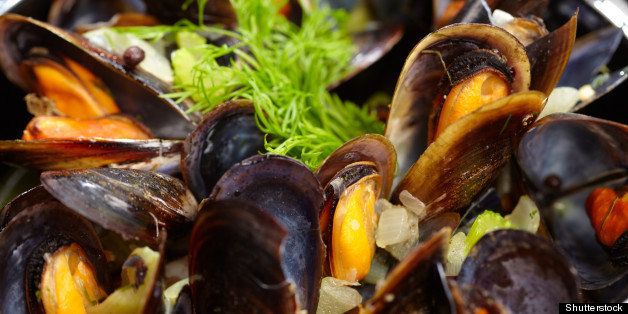
Contributed photo/Ventura County Environmental Health Division
A ban on consumption of recreationally harvested mussels has been in place since Monday and will extend until at least Oct. 31, officials said.
Contributed photo/Ventura County Environmental Health Division A ban on consumption of recreationally harvested mussels has been in place since Monday and will extend until at least Oct. 31, officials said.
Contributed photo/Ventura County Environmental Health Division
Officials have posted signs warning beach visitors of the ban.
Contributed photo/Ventura County Environmental Health Division Officials have posted signs warning beach visitors of the ban.
Photo with no caption
Photo by Anthony Plascencia, Ventura County Star
The annual ban on consuming recreationally harvested mussels from the California coast has been imposed early this year after testing revealed toxins that are harmful to humans.
The Ventura County Environmental Health Division and California Department of Public Health on Monday issued the annual quarantine on mussels taken by recreational shellfish harvesters. The quarantine was issued after testing detected elevated levels of domoic acid and high levels of the algae that produce the toxin.
"The quarantine is in place every year and normally begins May 1," Huff said Thursday.
However, this year's quarantine was instituted earlier after officials detected elevated levels of the toxin in mussels, said Elizabeth Huff, a manager with the Ventura County Environmental Health Division.
The quarantine will continue through Oct. 31. Huff added that the quarantine is instituted every year no matter what the tests show.
The quarantine applies to all species of mussels taken by the public anywhere on the California coast, including all bays, harbors, and estuaries. Commercially harvested shellfish are not included. Consumers of sport-harvested clams or scallops are advised to eat only the white meat, removing and discarding the dark-colored organs or viscera before cooking.
Officials said compliance with the quarantine can prevent paralytic shellfish poisoning and domoic acid poisoning.
Paralytic shellfish poisoning affects the central nervous system, producing tingling around the mouth and fingertips from within a few minutes to a few hours after eating shellfish that contain related toxins. These symptoms typically are followed by disturbed balance, lack of muscular coordination, slurred speech and difficulty swallowing, officials said. In severe poisonings, complete muscular paralysis and death from asphyxiation can occur.
Symptoms of domoic acid poisoning can occur within 30 minutes to 24 hours after eating toxic seafood. In mild cases, symptoms may include vomiting, diarrhea, abdominal cramps, headache and dizziness. These symptoms can disappear within several days. In severe cases, the patient may experience excessive bronchial secretions, difficulty breathing, confusion, disorientation, cardiovascular instability, seizures, permanent loss of short-term memory, coma and death.
There is no known antidote to the toxins, and cooking cannot be relied upon to destroy them. Supportive medical care, however, has been effective in managing the symptoms. Anyone who suspects they are experiencing symptoms should immediately seek medical attention, officials said.
The annual mussel quarantine will be in effect until at least Oct. 31.
For more information about the quarantine and the related health issues, visit the mussel quarantine frequently asked questions page by visiting http://www.cdph.ca.gov.
Staff writer John Scheibe contributed to this report. ___
(c)2013 Ventura County Star (Camarillo, Calif.)
Visit Ventura County Star (Camarillo, Calif.) at www.vcstar.com
Distributed by MCT Information Services
